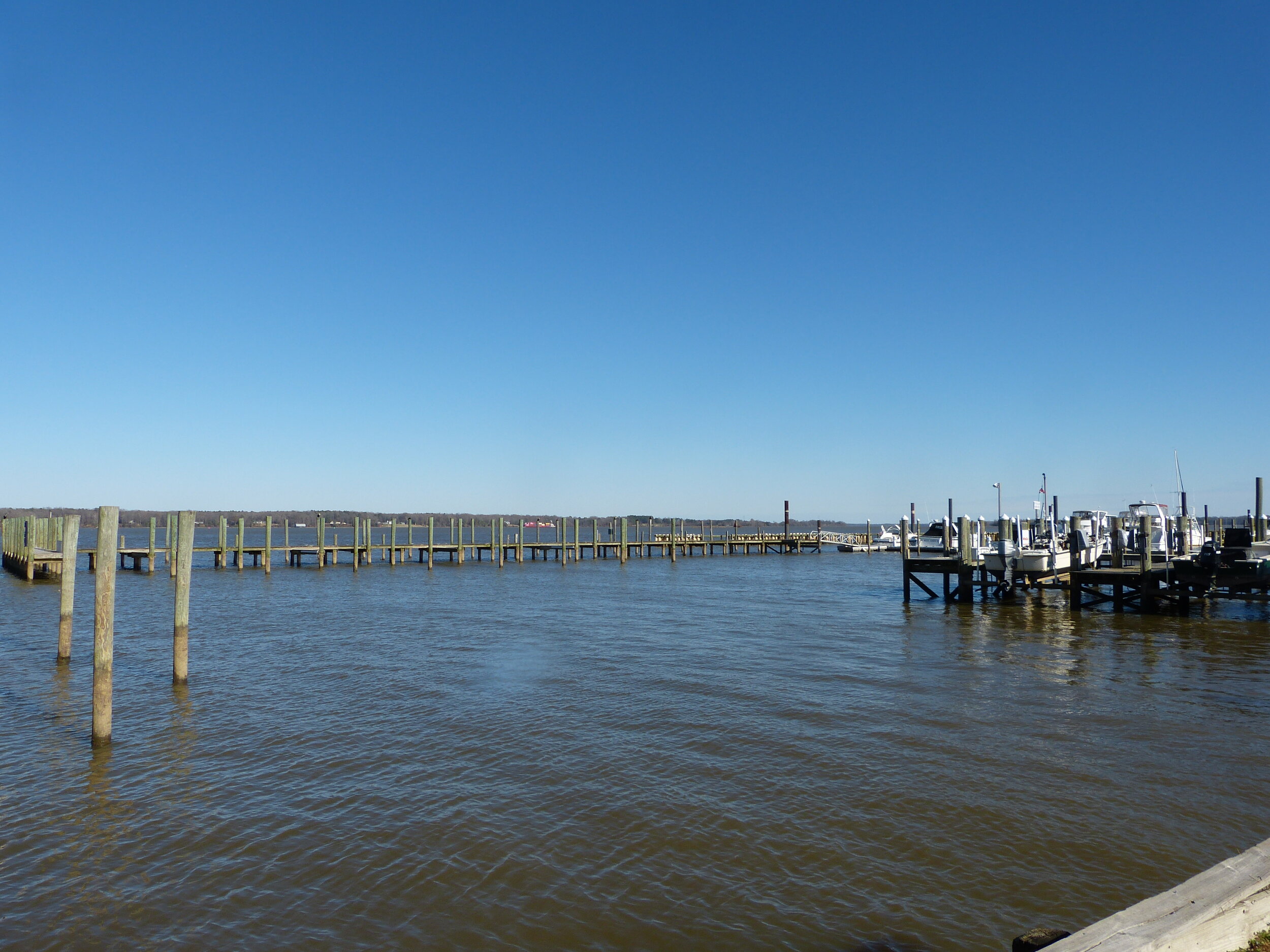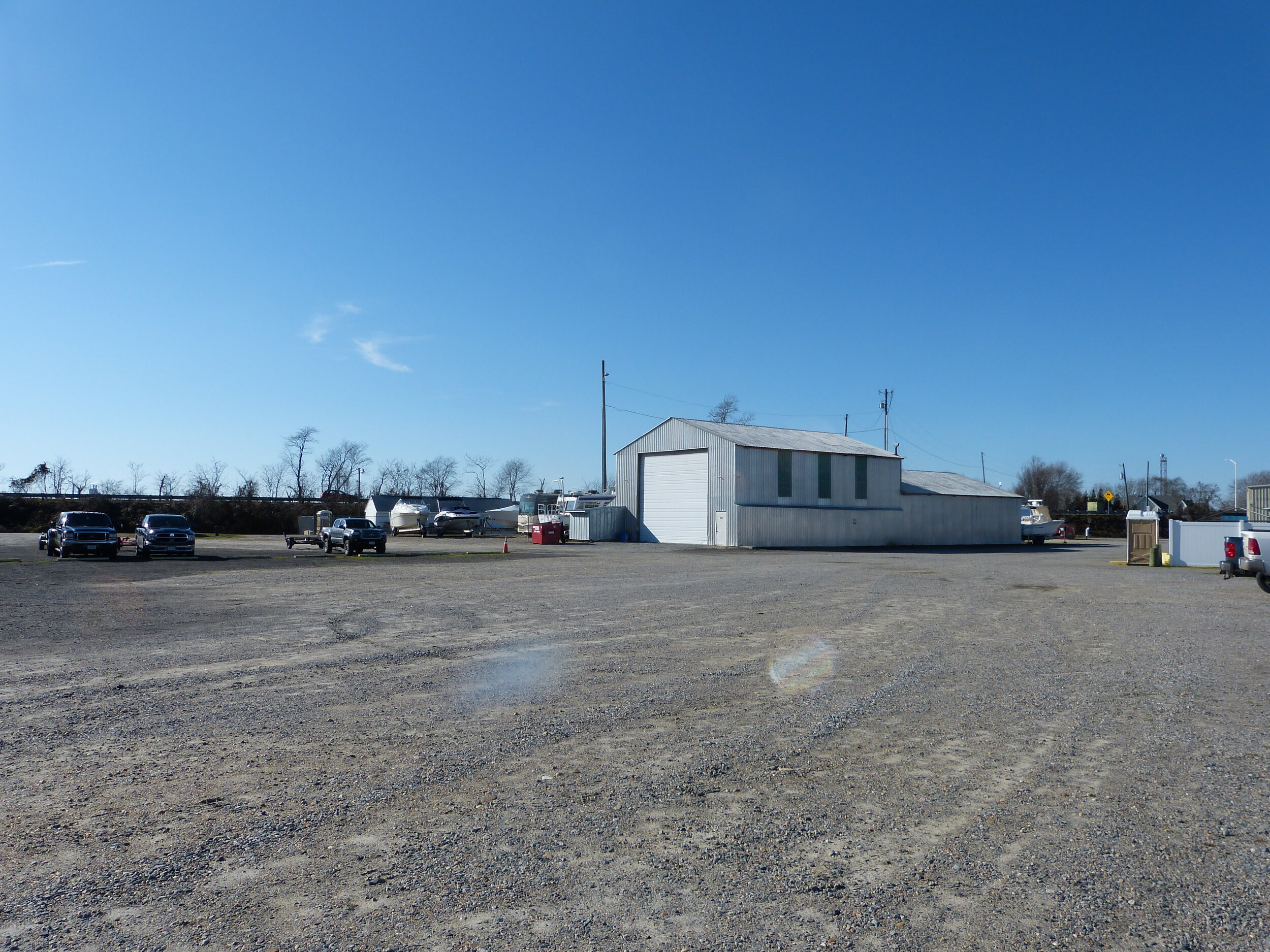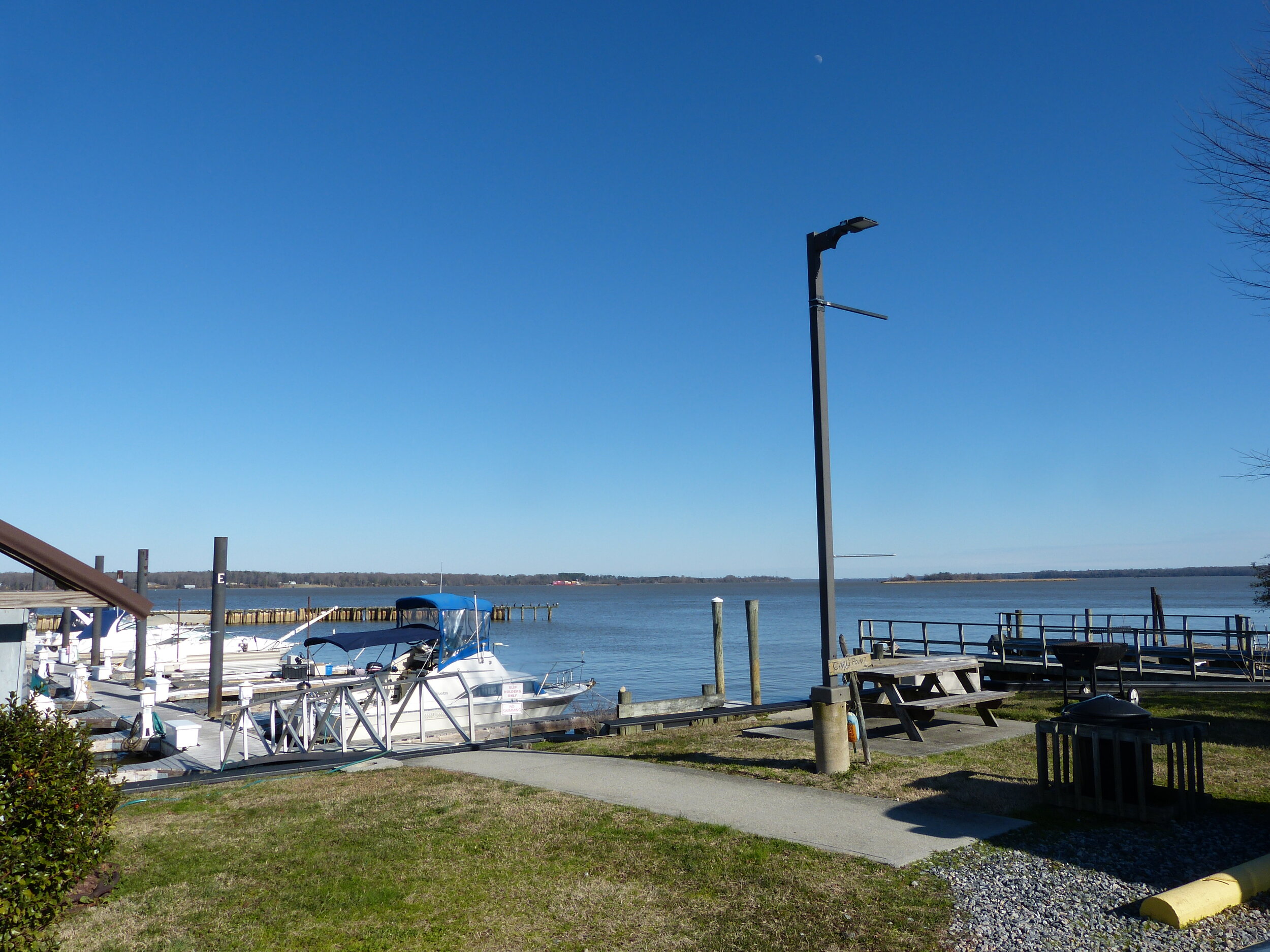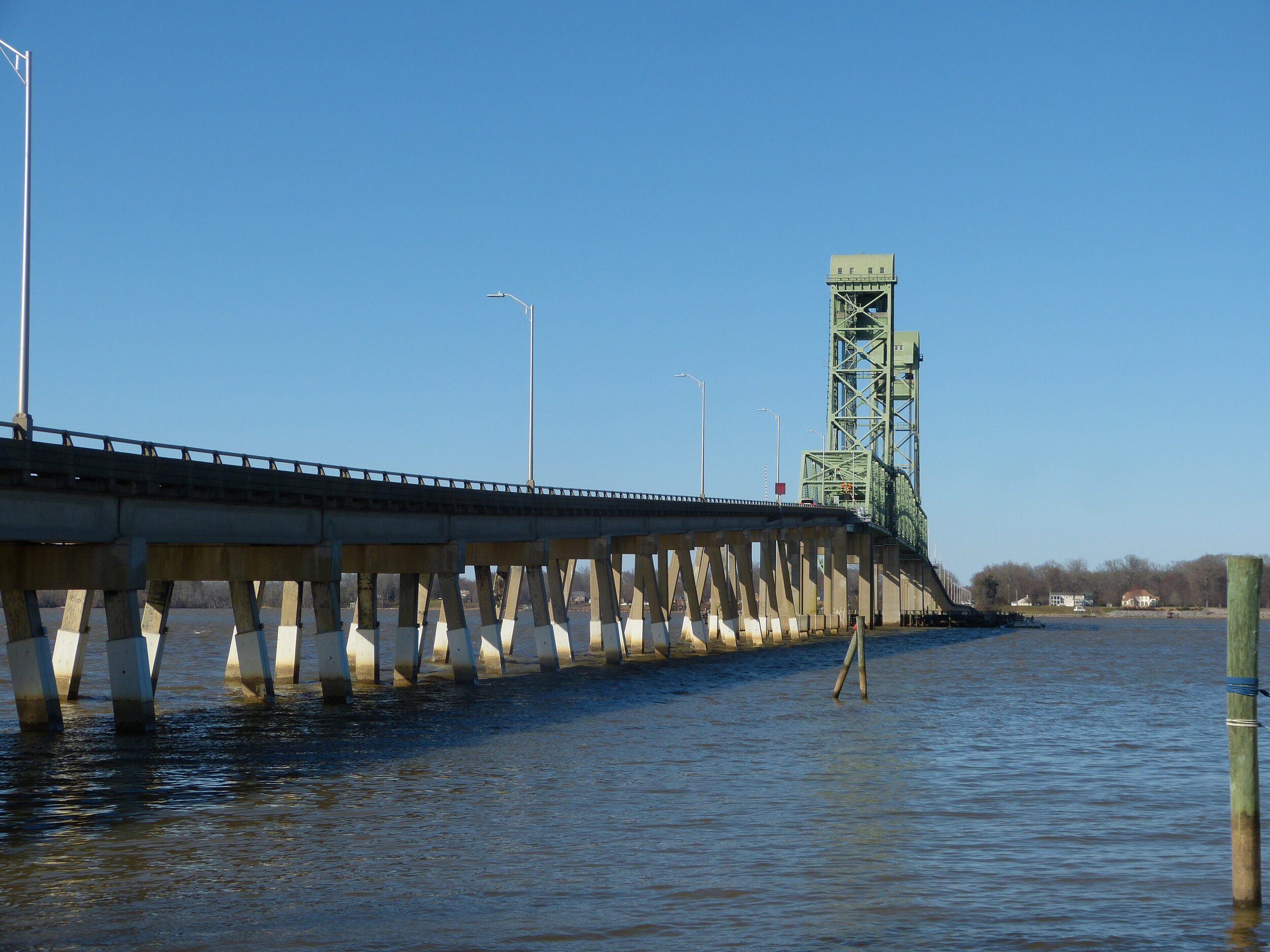With over 100 species reported in eBird as of February 2020, Jordan Point Marina ranks third among hotspots in Prince George County and has the top list of any publicly accessible location. The marina is located on a promontory that juts out into the James River, making it an excellent vantage point for viewing the water. It sits right on Rt. 156 (Jordan Point Road), in the shadow of the Benjamin Harrison Memorial Bridge – for birders coming from the north, it is the first left immediately after crossing the bridge, while from the south it is the last turn before Charles City County. For birders, the marina is also proximate to several other major birding destinations, including Shirley Plantation and Harrison Lake Fish Hatchery in northern Charles City, as well as City Point in Hopewell. Access is easy, as the marina has ample public parking. Most of the river viewing is south of Rt. 156, as the base of the bridge blocks makes it difficult to see much to the north.
As a birding spot, Jordan Point Marina can typically be a quick stop; most of its draw is in scoping the James for waterbirds. During winter, scanning the river is a good way to find ducks including Bufflehead, Ruddy Duck, Canvasback, scaup, and mergansers. Less common species including Common Goldeneye and White-winged Scoter have been seen here, and more thorough coverage might turn up more of note. There are sometimes large goose flocks on the river, but often these are distant and difficult to thoroughly scan. American Coots are usually swimming close among the boat docks, and sometimes there are large rafts of them. Winter also brings gulls, and while no unusual species have yet been recorded, the proximity to productive gull spots in Hopewell and Colonial Heights makes it worthwhile to thoroughly scan any flocks here. In the warmer months, Laughing Gulls and an assortment of terns replace the winter ducks and gulls. Royal Terns are general present from April through September, while Forster’s and Caspian are present for smaller windows during migration. Common and Black Tern have also been reported here, so be sure to carefully check terns on the pilings and over the river, particularly in spring and fall.
While the main attraction here is viewing the James, the hotspot has more to offer than just waterbirds. The marina is bordered on its south edge by a swampy woodlot that can be good for spring migrants or winter feeding flocks. There are also dense scrub tangles at the base of Rt. 156 that are good to check for passerines. Orange-crowned and Black-and-white Warblers have been spotted here in winter, and the riparian location likely attracts other overwintering passerines. The Benjamin Harrison Memorial Bridge often hosts a Peregrine Falcon, which is not always visible but can sometimes be seen hunting the pigeons that roost on the bridge. A pair has attempted nesting here. In the breeding season, the bridge also hosts a large Cliff Swallow colony that can easily be seen from the marina. This spot was the site of Virginia’s first Coastal Plain record of breeding Cliff Swallows, discovered by Fred Scott in 1979, and in 2017 the Center for Conservation Biology at William & Mary identified this as the largest Coastal Plain colony in Virginia.
eBird Hotspot: Jordan Point Marina
—Matt Anthony






